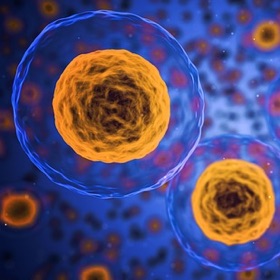Art in the Science of Osteopathy: Stories beyond Symptoms
Written by Rehana Kapadia – Cranial Osteopath at Shine on the Green.
There has been a spate of literature, published in recent years, from doctors writing of their quest for deeper philosophical insights within healthcare and the value of regaining the human perspective in the science of medicine (Solomon, 2016).
With osteopathy, the person is held central to their health presentation. In consultation, we see the patient’s health, as a reflection of their life experience. By listening to patient narratives, we acknowledge the perspective they may have on their own health. In examination and treatment, we ‘listen’ to the body, with trained palpatory hands, where the layers of ‘history’, held in the body, can be traced. Hearing stories and getting a sense of what matters to the patient and observing what is held in the tissues is just as important, for osteopaths, as diagnosing using anatomical knowledge and osteopathic technique. Treatment is thus shaped according to each patient and not on the basis of generalised symptoms or a specific condition.
Osteopathy adheres to the ‘triad of health’ (Stone, 1999): the necessary balance of structural physiology, biochemistry and psycho-social aspects, working together to maintain good health. Following on from this, is the key osteopathic principle: that if the structures are balanced, so too will the function of those structures and vice versa. Training in osteopathy is essentially interdisciplinary and includes regional anatomy, physiology, biochemistry, spinal mechanics, pharmacology, clinical diagnosis, psychosomatics, nutrition, naturopathy, gynaecology, paediatrics, exercise prescription and osteopathic techniques.
In medicine, the move has been toward increasing specialisation in regional fields, such as orthopaedics, neurology, cardiology, rheumatology, obstetrics and so on. Whilst this drive has given rise to technological advances in treatment, it has also, arguably, led to decreasing time, interest or ability of the medic to see the patient as a whole person; a social, psychological, emotional, as well as biological being. Philosophers despaired that, ‘Doctors are men who prescribe medicines of which they know little, to cure diseases of which they know less, in human beings of whom they know nothing’ Voltaire.
 Doctors themselves have acknowledged this disconnect (Gawande, 2002; Sacks, 1973); how years of clinical training and experience can distance the medic from understanding the patient beyond their ‘disease’ and cast limits on their practice. Medical culture has traditionally produced doctors revered for their rigorous training, knowledge and specialisms.
Doctors themselves have acknowledged this disconnect (Gawande, 2002; Sacks, 1973); how years of clinical training and experience can distance the medic from understanding the patient beyond their ‘disease’ and cast limits on their practice. Medical culture has traditionally produced doctors revered for their rigorous training, knowledge and specialisms.
However, after years of clinical testing and long residency hours, the ability to still see the patient, as a person and not a ‘case of symptoms to be treated’ or managed can diminish.
In examining disease, we gain wisdom about anatomy and physiology and biology. In examining the person with disease, we gain wisdom about life. Oliver Sacks
Conversely, the highly empathetic skills of an Osteopath can often belie the belief that patients and doctors have about the rigour of osteopathic training. Osteopaths undergo four or five year full-time undergraduate study, not dissimilar to Medicine degrees, usually followed by two years postgraduate training, reading all the medical specialities, including dissection, differential diagnosis and x-ray analysis, as well as training in practical osteopathic techniques and practice working in student clinics.
To find health should be the object of the practitioner. Anyone can find disease. Dr A.T. Still (1828 – 1917) Founder of Osteopathy.
The positive value that this more rounded, humanised, interdisciplinary approach can have on patients has been evident in the popularity of a second series on BBC One of Doctor in the House with Dr Rangan Chakrabarti. Frustrated,  as a GP, by the lack of time and the limitations of prescribing medications, for conditions he felt are more linked to ‘lifestyle’, he uses an empathetic approach to guide, not only the patient concerned, but the whole family, on positive changes they can make to their health, by advising on wholefood diets, exercise that can be incorporated realistically into their routines and acknowledging root psychological issues.
as a GP, by the lack of time and the limitations of prescribing medications, for conditions he felt are more linked to ‘lifestyle’, he uses an empathetic approach to guide, not only the patient concerned, but the whole family, on positive changes they can make to their health, by advising on wholefood diets, exercise that can be incorporated realistically into their routines and acknowledging root psychological issues.
In the process of management, the GP utilises the skills of psychotherapists, osteopaths, meditation and pilates teachers. In every case, this approach leads to the improvement in health and the reduction of dependency on repeat pharmaceutical prescriptions.
Sacks insists that seeing the arc of a patient’s history is crucial to doctoring ((Solomon, 2016). Gawande writes: ‘We look for medicine to be an orderly field of knowledge and procedure. But it is not. It is an imperfect science, an enterprise of constantly changing knowledge, uncertain information, fallible individuals and, at the same time, lives on the line. There is science in what we do, yes, but also habit, intuition and sometimes plain old guessing’.

The greater understanding that comes from seeing patients, not just as a series of symptoms, requiring diagnosis, but to value the narrative that underlies the patients ‘complaint’ is the basis upon which Osteopathy has always been rooted. The osteopath sees the practitioner and patient consultation, as part of the therapeutic process. This narrative not only permits insight into the condition that is being presented, but is seen as integral to the treatment of the patient who is being heard, and implicitly valued for their own insights and for the Osteopath, who is able to listen, intuit and evolve as a practitioner from these encounters. It is this vital intersection of science and art, that allows us to gain true insight – not only of the patient, but of ourselves.
Rehana Kapadia – Cranial Osteopath at Shine on the Green.
References:
Francis, Gavin (2015) Adventures in Human Being. Wellcome Institution
Gawande, Atul (2002) Complications: A Surgeon’s Notes on an Imperfect Science. Profeil
Kalanithi, Paul (2016) When Breath Becomes Air. Vintage
Sacks, Oliver (1973) Awakenings. Duckworth
Solomon, Andrew (2016), ‘Literature about medicine may be all that can save us’, The Guardian, April 22, 2016
Stone, Caroline (1999) Science in the Art of Osteopathy: Osteopathic Principles and Practice, Stanley Thornes
This piece is a response to the excellent article by Andrew Solomon in the Guardian (22 April 2016)